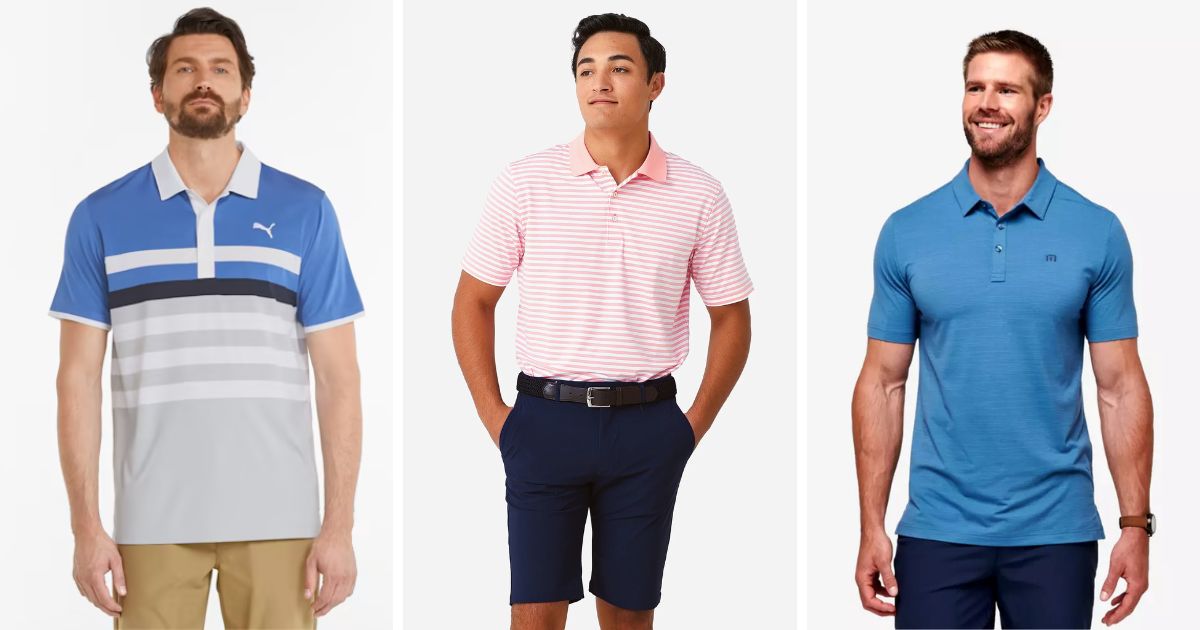Table of Contents
Understanding Golf Club Distance
When watching professional golfers effortlessly drive the ball over 300 yards, it's only natural for amateur players to want to add distance to their own shots. While talent and physiology play a role, having properly fit clubs that maximize your potential distance is key.
That's where using a golf club distance chart comes in handy. A golf club distance chart provides averages and benchmarks for how far you can expect to hit each club based on your swing speed. Understanding these yardages helps you choose the right clubs for your bag and make smarter decisions on the course.
Club Distances Based on Swing Speed
Golf club distance charts break down the average driving distance for each club type by swing speed. Faster swing speeds generally result in longer carries. Here are the average yards for common swing speeds:
Driver Distance by Swing Speed
- 60 mph - 200 yards
- 80 mph - 250 yards
- 90 mph - 275 yards
- 100 mph - 300 yards
- 110 mph - 325 yards
- 120+ mph - 350+ yards
5 Iron Distance by Swing Speed
- 60 mph - 110 yards
- 80 mph - 150 yards
- 90 mph - 165 yards
- 100 mph - 180 yards
- 110 mph - 195 yards
- 120+ mph - 210 yards
Distance slowly decreases from the driver down through the wedges in the set. But knowing these averages helps you choose woods, hybrids, irons, and wedges to properly gap your distances.
Factoring In Launch Angle and Spin Rates
Of course, clubhead speed isn't the only factor. Launch angle and spin rates also significantly impact total distance. A lower launch angle or excess spin will reduce carry distance. Optimizing these impacts through proper club fitting helps many players pick up 10-30 extra yards.
Drivers for Distance
Modern driver clubfaces are designed to help maximize ball speed and distance, even on mishits. For slower swing speeds, drivers with higher lofts (10.5-12 degrees) launch the ball on a higher trajectory while minimizing spin for added carry.
Fairway Woods for Distance
Fairway woods are ideal for long par 4s and par 5s when you need more distance than an iron can provide but greater accuracy than the driver. Modern fairway woods like the Callaway Epic Speed generate high launch and low spin across a range of swing speeds.
Gapping Your Golf Club Distances
Once you know your average yardages for each club, you can gap your set appropriately from driver down through the wedges. A distance gap of 10-20 yards between clubs is ideal for having a club for every shot.
Pay attention to any yardage gaps greater than 40 yards, as you may struggle to cover a 160 yard shot with a 120 yard 9 iron or a 220 yard 4 hybrid. Filling these distance gaps with additional club types helps improve shot consistency and lower scores.
Balancing Distance and Precision
When gapping a set, also recognize that accuracy diminishes slightly for the longest clubs in the bag. While you can hit a 60 degree lob wedge with precision from 100 yards, accuracy from 250 yards with a 3 wood is more challenging. Finding the right balance of distance vs precision for your game is key.
Utility Clubs Add Distance Options
Many golfers also opt to add “utility clubs” to bridge distance gaps. Utility irons and hybrids ranging from 16 to 22 degrees fill the gap between traditional irons and woods to optimize yardages.
What Impacts Golf Club Distances
Knowing the average golf club distances is just the start. Many factors go into distance generation on course based on your clubs, swing and environment:
Clubhead Design
Driver clubhead sizes up to 460cc maxed allowed by the USGA became standard in recent decades, allowing for greater forgiveness and faster ball speeds. Fairway woods have grown deeper and more forgiving while hybrids combine iron precision with wood distance.
Shaft Flex
Having the proper golf club shaft flex matched to your transition and temp helps maximize distance through optimized launch conditions while reducing spin-sapping mis-hits.
Center Strikes
Mishits reduce ball speed and rob distance. Improve consistency hitting the sweetspot through proper club fitting, lessons and practice.
Smash Factor
How efficiently you transfer energy from swing to ball for added ball velocity plays a role. Fitter clubheads and shafts optimized for your speed improve smash factor.
Spin Rates
Too much spin from an angled attack or improper release saps distance. Finding optimal spin rates for your swing through proper club fitting is key.
Environmental Factors
Elevation changes, wind speeds, temperature and even humidity levels impact possible distances on any given day.
Using Golf Distance Charts on the Course
Once you have all the yardages dialed in through practice and on launch monitors, it’s time to put that data to use on the golf course.
Par 5 Approach Shots
One of the most useful applications is knowing exactly how far out you need to layup on a par 5 to set up the best approach shot to reach in two. For example, if you know your 6 iron flies 160 yards and you struggle with hybrids, you can play for exactly 160 out.
Tee Shots Requiring Carry
If there is a fairway bunker 250 yards out requiring a 250 yard carry, choose between a 200 yard 5 wood or 275 yard hybrid based on distance chart averages instead of guessing between clubs.
Blind Shots
When you are hitting blind over a hill and the yardage is front/middle/back known yardages, choose the club distances that safely clear the closer front range.
Layup Yardages
Distance charts also help with layups to tricky par 3 distances over water, bunkers and other hazards when you need a specific yardage to clear trouble.
Customizing Your Golf Club Distance Chart
While golf club distance charts provide averages, every golfer's distances are ultimately unique. Track your personal carrying distances for each club on the driving range. Note any major gaps in yardages between clubs requiring potential replacements or additions.
Gapping Your Scoring Clubs
Pay closest attention to dialing in wedge distances tighter from 50 yards and in as these are the clubs used most around greens and in scoring situations.
Update Distances After Fittings
Any changes such as shaft replacement also impacts distance so updating averages after club adjustments is important as well.
Having a personalized golf club distance chart tuned to your specific yardages provides a valuable reference to make better game management decisions on the course tailored to your distances.
FAQs
What is a golf club distance chart?
A golf club distance chart provides averages for how far each club type (driver, irons, wedges) is expected to carry based on different swing speeds. It's a handy reference to help golfers optimize their yardages.
What swing speed should I use to pick my distances?
Have your swing speed measured by a club fitter or golf professional to best match up with chart averages. Otherwise, estimate based on average driving distance of your longest clubs.
Do golf club distance charts consider factors like launch angle?
Basic golf club distance charts focus mostly on swing speed, though some may include other factors like optimum launch conditions. But charts provide just averages, so get fit for your individual swing.
Can distance charts help me choose new clubs?
Yes, distance charts help determine ideal club yardages to look for when selecting woods, hybrids, irons and wedges to optimize gapping for your swing speed.
How often should I update my personal distance chart?
Every golfer's distances will vary over time so revisit your personal club distances at least annually, after making swing changes, changing clubs or getting re-fit for updated averages.





.jpg)

.jpg)
.png)





